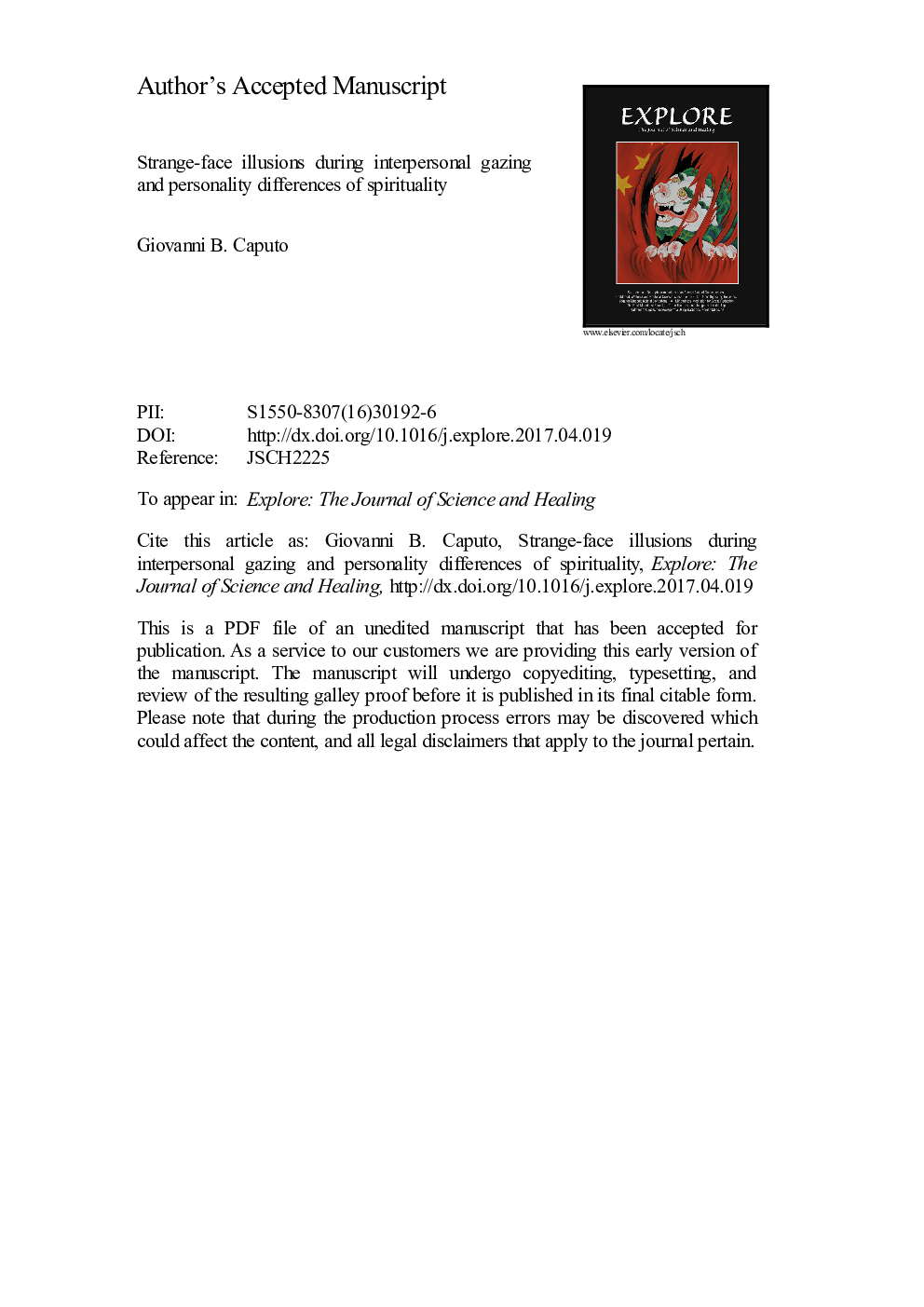| کد مقاله | کد نشریه | سال انتشار | مقاله انگلیسی | نسخه تمام متن |
|---|---|---|---|---|
| 8588565 | 1564789 | 2017 | 14 صفحه PDF | دانلود رایگان |
عنوان انگلیسی مقاله ISI
Strange-face Illusions During Interpersonal-Gazing and Personality Differences of Spirituality
ترجمه فارسی عنوان
توهمات عجیب و غریب در طول بینش ذهنی و شخصیت تفاوت معنویت
دانلود مقاله + سفارش ترجمه
دانلود مقاله ISI انگلیسی
رایگان برای ایرانیان
کلمات کلیدی
بینشورایی، نومیتی، طرح ریزی، خود، مرز خودکفا، معنویت، توهم عجیب و غریب،
موضوعات مرتبط
علوم پزشکی و سلامت
پزشکی و دندانپزشکی
طب مکمل و جایگزین
چکیده انگلیسی
Strange-face illusions are produced when two individuals gaze at each other in the eyes in low illumination for more than a few minutes. Usually, the members of the dyad perceive numinous apparitions, like the other's face deformations and perception of a stranger or a monster in place of the other, and feel a short lasting dissociation. In the present experiment, the influence of the spirituality personality trait on strength and number of strange-face illusions was investigated. Thirty participants were preliminarily tested for superstition (Paranormal Belief Scale, PBS) and spirituality (Spiritual Transcendence Scale, STS); then, they were randomly assigned to 15 dyads. Dyads performed the intersubjective gazing task for 10 minutes and, finally, strange-face illusions (measured through the Strange-Face Questionnaire, SFQ) were evaluated. The first finding was that SFQ was independent of PBS; hence, strange-face illusions during intersubjective gazing are authentically perceptual, hallucination-like phenomena, and not due to superstition. The second finding was that SFQ depended on the spiritual-universality scale of STS (a belief in the unitive nature of life; e.g., “there is a higher plane of consciousness or spirituality that binds all people”) and the two variables were negatively correlated. Thus, strange-face illusions, in particular monstrous apparitions, could potentially disrupt binding among human beings. Strange-face illusions can be considered as 'projections' of the subject's unconscious into the other's face. In conclusion, intersubjective gazing at low illumination can be a tool for conscious integration of unconscious 'shadows of the Self' in order to reach completeness of the Self.
ناشر
Database: Elsevier - ScienceDirect (ساینس دایرکت)
Journal: EXPLORE: The Journal of Science and Healing - Volume 13, Issue 6, NovemberâDecember 2017, Pages 379-385
Journal: EXPLORE: The Journal of Science and Healing - Volume 13, Issue 6, NovemberâDecember 2017, Pages 379-385
نویسندگان
Giovanni B. PhD,
